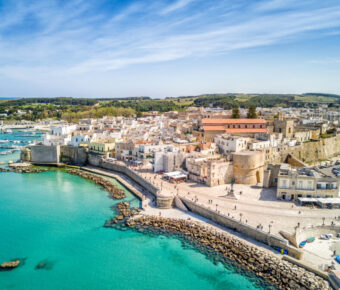
The Ultimate Guide to Scoring Affordable Monthly Villa Rentals in Italy (2025 Digital Nomad Edition)
Italy’s villa rental market has exploded by 60% since 2022, but savvy digital nomads can still find exceptional monthly deals ranging from €1,500 in rural Sicily to €8,000 for Tuscan luxury—if you know where to look and when to book. With Italy’s new Digital Nomad Visa requiring just €28,000 annual income and offering unlimited renewals, 2025 presents the perfect opportunity to live your Italian dream while maintaining your remote career.
The data tells a compelling story: while February 2025 recorded the highest rental prices in two years at €13.81 per square meter, strategic planning and insider knowledge can slash your costs by up to 60%. This guide reveals exactly how to navigate Italy’s complex villa rental landscape, from negotiating monthly discounts to avoiding the common pitfalls that cost digital nomads thousands.
Whether you’re dreaming of a rustic Tuscan farmhouse with vineyard views, a clifftop Amalfi Coast villa with infinity pool, or an affordable Sicilian retreat near ancient ruins, this comprehensive guide provides the roadmap to making it happen without breaking the bank.
Contents
- Historical pricing reveals your best windows of opportunity
- Tuscany delivers the complete package for remote workers
- Amalfi Coast luxury becomes attainable with strategic timing
- Sicily offers unbeatable value without sacrificing lifestyle
- Master the art of villa type selection
- Navigate Italy’s Digital Nomad Visa like a pro
- Essential tech setup for villa productivity
- Strategic booking platforms and negotiation tactics
- Transportation solutions for villa-based nomads
- Your month-by-month action calendar for 2025
- Avoid the expensive mistakes that sink budgets
- Your pathway to Italian villa success
- More Travel Guides
Historical pricing reveals your best windows of opportunity
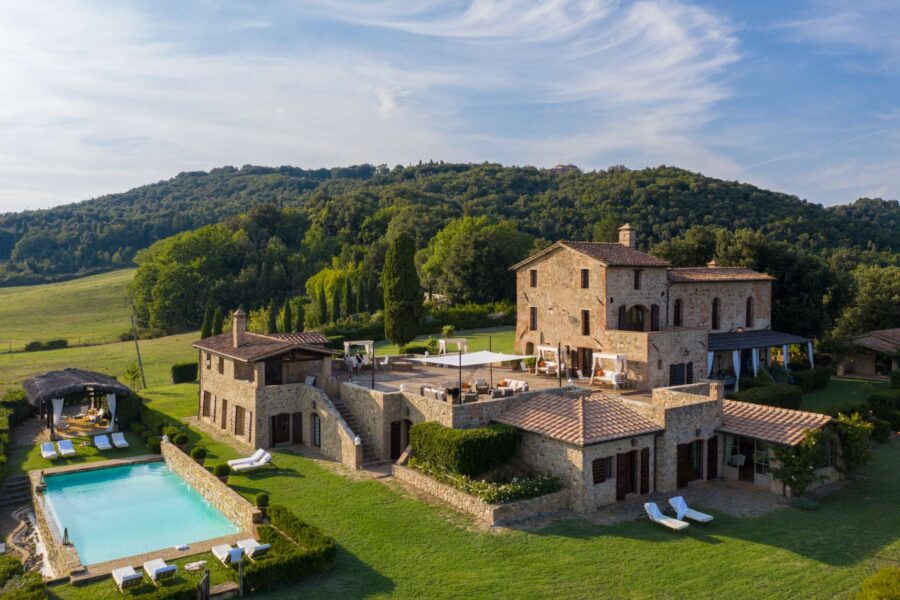
Italian villa rentals have experienced dramatic growth over the past decade, with post-pandemic acceleration pushing prices up 60% in major destinations between 2022 and 2024. The residential rental market saw a 9.34% increase from February 2024 to February 2025, reaching record highs. However, understanding these trends reveals significant savings opportunities.
The sweet spot for budget-conscious digital nomads lies in the seasonal variations. Peak summer rates (June-September) command 200-400% premiums over off-season pricing. A Tuscan villa costing €15,000 monthly in August drops to €4,000 in November. The data shows January and February offer the deepest discounts at 60-70% below peak season, while shoulder seasons (April-May, September-October) provide the optimal balance of weather and value at 20-30% savings.
Regional price disparities create additional opportunities. While Lombardy commands €17.7 per square meter monthly and Amalfi Coast luxury villas reach €20,000 monthly in summer, Sicily offers comparable properties at €1,500-5,000 monthly year-round. The key insight: book Sicily in summer for beach access at mainland winter prices, or target Tuscany in late October for harvest season at 40% discounts.
Early 2025 market data suggests stabilization after rapid growth, with experts projecting 2-3% annual increases rather than the dramatic spikes of recent years. This creates a window of opportunity for securing long-term rentals before the next growth cycle.
Tuscany delivers the complete package for remote workers
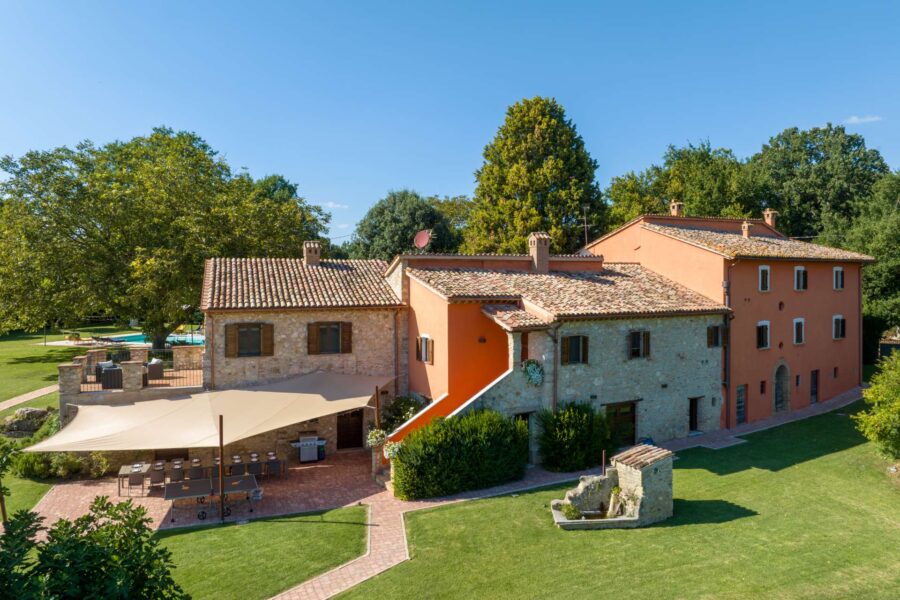
Tuscany remains the gold standard for digital nomad villa rentals, combining reliable fiber optic internet, rich cultural experiences, and efficient transportation networks. The region’s infrastructure improvements mean 80% of rental villas now include high-speed Wi-Fi as standard, addressing the primary concern of remote workers.
The Chianti region between Florence and Siena offers the quintessential Tuscan experience with monthly rates of €3,000-8,000 for 3-4 bedroom villas. These properties typically feature exposed wooden beams, private pools, and panoramic terraces perfect for Zoom calls with envious colleagues. The lesser-known gem is Lucca, where monthly rentals average €2,000-5,000—significantly less than Florence’s surroundings while maintaining excellent train connections.
Rural Tuscany provides exceptional value at €1,800-4,000 monthly for authentic farmhouses. These properties often include olive groves and vegetable gardens, allowing you to supplement your grocery budget while living the Italian dream. The Val d’Orcia UNESCO World Heritage area offers some of the most photogenic workspaces imaginable, with rolling hills and medieval villages visible from your desk.
The region’s established expat communities in Florence and Siena provide instant networking opportunities through regular meetups and co-working spaces. Weekly markets in historic town squares, cooking classes using herbs from villa gardens, and wine tastings at neighboring vineyards ensure your evenings and weekends overflow with authentic experiences.
For digital nomads prioritizing connectivity, focus on properties near larger towns like Arezzo or Pistoia, where fiber optic coverage reaches 95%. Always request speed test results before booking—reputable owners happily provide this information.
Amalfi Coast luxury becomes attainable with strategic timing
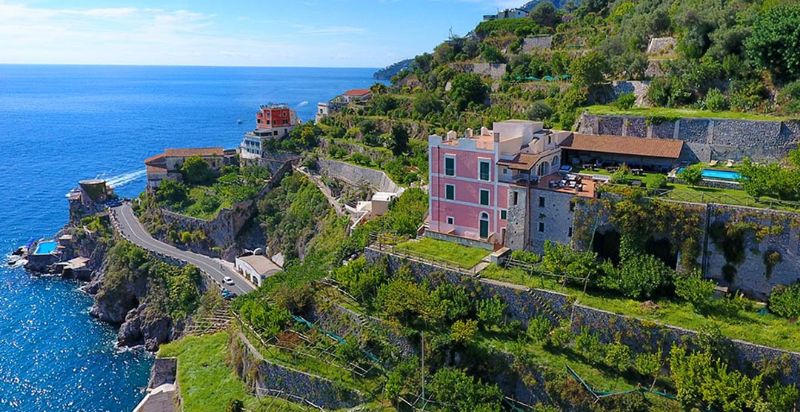
The Amalfi Coast’s reputation for eye-watering prices holds true only during peak season. Strategic digital nomads can access these spectacular properties at 50-70% discounts during winter months, transforming impossibly expensive villas into attainable monthly rentals.
Positano’s Villa Oliviero exemplifies the opportunity: this 6-bedroom luxury property commanding €15,000+ weekly in summer offers monthly rates October through May. The catch? You’ll navigate 150 steps from the main road and share the town with locals rather than tourists. For remote workers, this trade-off means productive mornings with sea views and authentic Italian lunches at neighborhood trattorias.
Ravello emerges as the thinking nomad’s choice, offering spectacular views with fewer crowds than Positano. Properties like Villa Principessa include infinity pools and direct sea access at €12,000+ weekly in season but negotiate down to €8,000-10,000 monthly in shoulder seasons. The town’s cultural calendar, including the prestigious Ravello Festival, provides year-round entertainment.
Hidden value spots include Minori and Maiori, where €2,000-5,000 weekly rates translate to €6,000-15,000 monthly—still premium but offering the full Amalfi experience. These towns feature sandy beaches rare on the coast and maintain better year-round services than tourist-focused Positano.
Connectivity challenges require preparation. Hillside villas may struggle with consistent internet due to terrain, making backup solutions essential. Successful nomads report using multiple mobile providers and portable hotspots. The restricted road access also demands careful planning—factor in €3 per trip for Positano’s public elevator and extremely limited parking throughout the region.
Sicily offers unbeatable value without sacrificing lifestyle
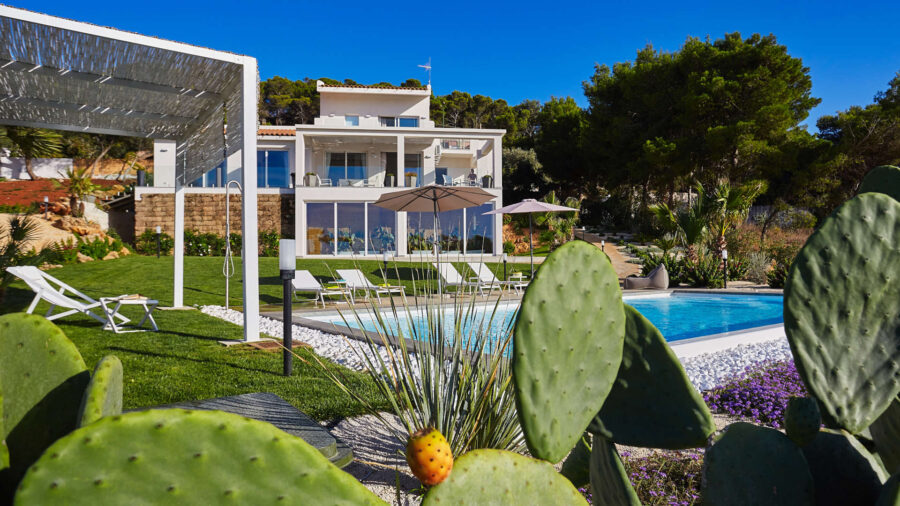
Sicily emerges as the budget champion for digital nomads, delivering monthly villa rentals at 30-50% less than northern Italy while maintaining growing remote work infrastructure. The island’s distinct culture, exceptional cuisine, and year-round mild climate create an ideal base for extended stays.
Palermo leads for urban amenities and cultural immersion, with monthly rentals ranging €1,000-3,500. The city’s Piano C and Cre.Zi Plus co-working spaces provide professional environments when villa isolation becomes too much. Street food culture means you can feast like royalty on arancini and cannoli for under €10 daily, stretching your budget further.
Taormina represents Sicily’s luxury tier at €4,000-12,000 monthly, justified by ancient Greek theatre views and proximity to Mount Etna. However, nearby Cefalù delivers comparable coastal charm at €2,000-5,000 monthly, featuring sandy beaches and a thriving café culture perfect for afternoon work sessions.
Catania surprises with its vibrant nightlife and urban energy while maintaining affordable €1,500-4,000 monthly rates. The city’s proximity to Mount Etna provides weekend hiking adventures, while Coworking Catania offers a professional space for important video calls or focused work sessions.
The island’s improving digital infrastructure means major cities now offer reliable 30-100 Mbps connections, though rural areas remain patchy. The growing remote worker community organizes regular meetups in Palermo and Catania, creating networking opportunities often missing in more tourist-focused destinations.
Pro tip: Sicily’s location makes it perfect for exploring North Africa and Malta during long stays. Budget €50-150 for flights to Tunis or Valletta when you need a visa run or weekend adventure.
Master the art of villa type selection
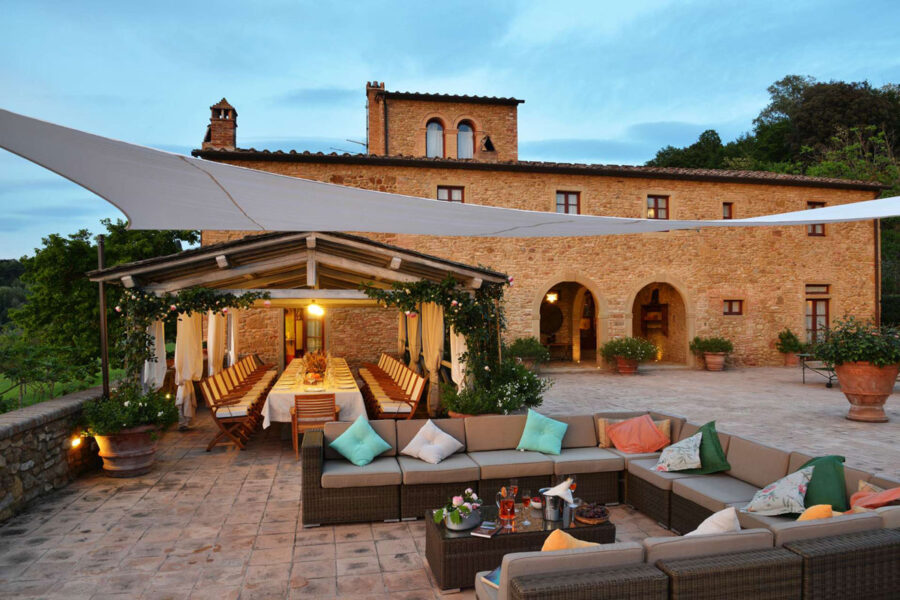
Understanding villa categories prevents costly mistakes and ensures your monthly rental matches both budget and lifestyle. Each type offers distinct advantages, with prices varying dramatically based on features and location.
Standard villas (€1,500-5,000 monthly) provide the essentials: 2-4 bedrooms, basic kitchens, and shared or private pools. These properties work perfectly for budget-conscious nomads prioritizing location over luxury. Look for reviews mentioning “reliable Wi-Fi” and “quiet workspace” to identify remote work-friendly options.
Rustic farmhouses (€1,800-6,000 monthly) deliver authentic Italian experiences with stone construction and rural settings. While charming, verify internet connectivity carefully—many require mobile hotspots as primary connections. The trade-off includes vegetable gardens, olive groves, and complete privacy for focused work.
Modern villas (€3,000-12,000 monthly) cater to tech-savvy nomads with contemporary design and reliable infrastructure. These properties feature dedicated workspaces, high-speed internet, and efficient heating/cooling systems crucial for year-round comfort. The premium pays off through increased productivity and reduced technical frustrations.
Luxury villas (€8,000-25,000+ monthly) include staff, chef services, and premium locations. For high-earning nomads or those sharing costs, these properties offer hotel-level service with home privacy. Consider them for special occasions or when entertaining clients—the investment in image can pay dividends for certain professionals.
Hidden costs vary by category. Budget €150-400 monthly for utilities in standard properties, potentially doubling for luxury villas with pool heating and extensive air conditioning. Rustic properties may require €50-150 weekly for pool maintenance not included in base rates.

Italy’s Digital Nomad Visa, launched in 2024, transforms legal compliance from nightmare to straightforward process. The program requires €28,000 minimum annual income and offers unlimited renewals, making it one of Europe’s most accessible nomad visas.
The application process takes 30-90 days through Italian consulates in your home country. Key requirements include proof of remote employment or freelance income (not passive investment income), health insurance with €30,000+ coverage, and either a university degree or three years of professional experience. ICT professionals need only three years’ experience within the last seven, recognizing the tech industry’s alternative pathways.
Budget €116 for the visa application plus €200-500 for document preparation and translation. Health insurance runs €350-2,000 annually depending on coverage levels. Critical insight: apply for your codice fiscale (tax identification number) at the consulate simultaneously—this free document unlocks everything from SIM cards to bank accounts.
Upon arrival, you have eight days to apply for your residence permit at the local Questura. Book this appointment immediately upon landing to avoid complications. The permit lasts one year with unlimited renewals, provided you maintain income requirements. After five years, you’re eligible for permanent residence; after ten years, Italian citizenship.
Tax implications require attention. Spending over 183 days annually in Italy triggers tax residency, subjecting worldwide income to Italian taxation. However, tax treaties may prevent double taxation—consult professionals familiar with your home country’s agreements.
Essential tech setup for villa productivity

Successful villa-based remote work demands redundant connectivity systems. Never rely on a single internet source, regardless of owner promises. The standard setup includes primary fiber connection, mobile hotspot with unlimited data SIM, and increasingly, Starlink satellite backup.
TIM (Telecom Italia) provides the most reliable coverage, including rural areas, with €10-30 monthly plans offering 20-80GB. Urban nomads can save with Iliad’s €7-15 plans, but coverage drops significantly outside cities. Smart nomads maintain both, using TIM for travel days and Iliad for city-based work.
International eSIM providers like Airalo (€4.50-33 for 1-20GB) offer instant connectivity upon arrival, crucial for coordinating villa check-ins. Holafly’s unlimited plans work well for data-heavy users, though speeds may throttle after daily limits.
Power infrastructure requires attention in older villas. Italy uses Type F/L plugs with 230V current. Pack universal adapters, voltage converters for sensitive equipment, and consider a UPS (uninterruptible power supply) for work computers—rural power cuts, while infrequent, can disrupt important calls.
The workspace setup separating amateurs from professionals includes a portable monitor (productivity game-changer), ergonomic laptop stand, quality webcam for video calls, and noise-canceling headphones for focusing despite la dolce vita distractions. Many nomads report the €300-500 investment in proper equipment pays for itself through increased productivity within weeks.
Strategic booking platforms and negotiation tactics
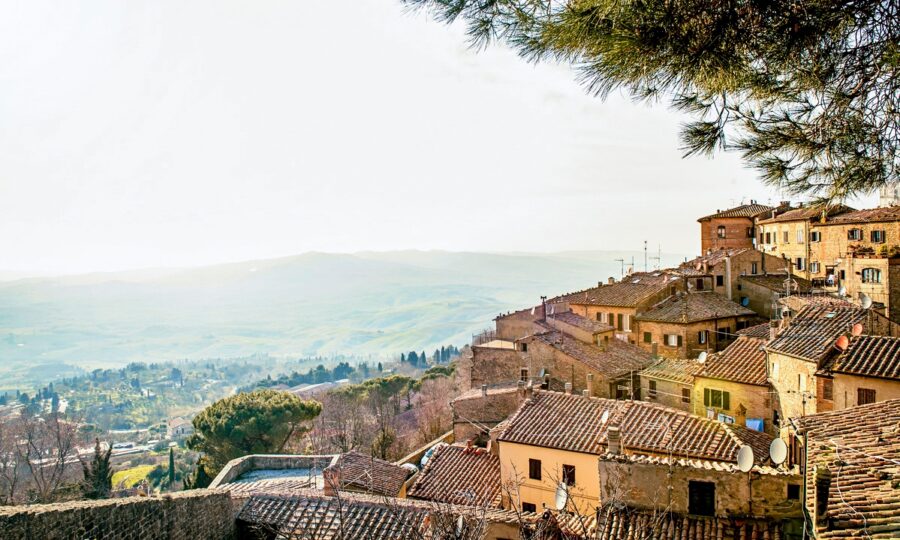
Platform selection significantly impacts both costs and experiences. Airbnb’s automatic 20-50% monthly discounts make it ideal for extended stays, while VRBO’s whole-home focus suits nomads seeking privacy. However, direct booking through local sites like CaseVacanza.it or Hidden Italy can save 15-25% by avoiding platform fees.
The negotiation email that consistently delivers results acknowledges the owner’s concerns while demonstrating your value. Mention your professional background, previous positive rental experiences, and flexibility with dates. Offering to handle minor maintenance, pay two months upfront, or maintain the garden often secures additional 10-20% discounts.
Timing remains crucial. Properties booked 6-9 months ahead offer the best selection with early bird discounts. The sweet spot for negotiation falls 3 months before arrival—owners growing nervous about vacancies become remarkably flexible. Last-minute bookings (2-4 weeks out) can yield 40-60% discounts but risk limited selection.
Red flags preventing expensive mistakes include demands for wire transfers to foreign accounts, prices significantly below market rates, and reluctance to provide verifiable references. Always reverse image search property photos and verify addresses through Google Street View. Legitimate owners happily provide video tours and additional photos.
Payment protection strategies start with credit cards offering fraud protection and chargeback rights. Platform payments provide additional security layers, while PayPal’s goods and services option covers direct bookings. Never use payment apps without buyer protection for international transactions.
Transportation solutions for villa-based nomads
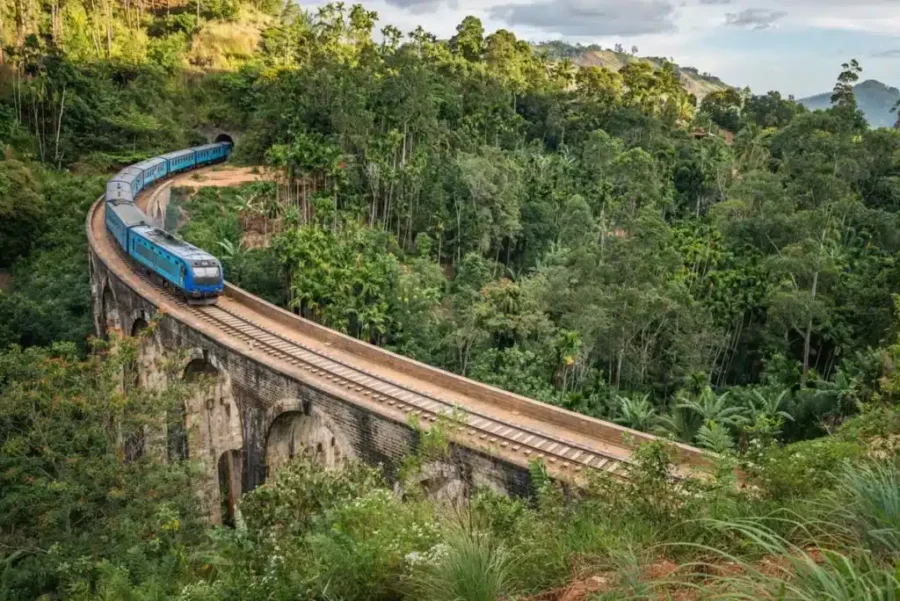
The car rental versus public transport decision depends entirely on villa location and work style. Rural villas require vehicles—full stop. Monthly rentals averaging €400-600 for small cars (add €100-200 for automatic transmission) provide freedom to explore while maintaining reasonable costs.
Urban-adjacent villas near train stations unlock Italy’s efficient rail network. Regional monthly passes at €35-60 offer unlimited local travel, perfect for nomads who enjoy working from cafés or co-working spaces. The key lies in confirming actual walking distances—Italian estimates of “5 minutes from station” often translate to 15-20 minutes with luggage.
Northern Italy’s transport infrastructure mirrors Switzerland’s efficiency, making car-free living viable near major towns. Central Italy balances good connections with authentic experiences. Southern Italy and islands demand more patience—buses replacing trains, limited schedules, and the Italian philosophy that schedules are suggestions rather than commitments.
Hidden costs catch unprepared nomads. Italy’s ZTL (Limited Traffic Zones) generate €100+ fines for unknowing drivers entering historic centers. Highway tolls add €50-150 monthly depending on usage. Parking in tourist areas can reach €30 daily. Factor these into budgets when comparing transport options.
The hybrid approach often works best: public transport for daily needs supplemented by occasional rentals for weekend exploration. Many nomads report this combination provides optimal flexibility at €200-500 monthly—significantly less than full-time car rental while maintaining freedom for adventures.
Your month-by-month action calendar for 2025

Success in Italy’s competitive villa market requires strategic timing aligned with seasonal patterns and booking windows.
January-February 2025: Book your peak summer accommodations now for June-August stays. While you’re enjoying 60-70% off-season discounts on current rentals, secure prime properties for summer before prices spike. Focus on Amalfi Coast and prime Tuscan estates that book 12+ months ahead.
March-April 2025: Lock in fall reservations for September-November, capturing harvest season at pre-summer prices. April particularly rewards flexible nomads with mild weather at 20-30% below peak rates. Easter brings festivals but avoid the holiday week itself due to temporary price spikes.
May-June 2025: Last chance for summer bookings, though selection narrows. June marks the transition to high season—if staying put, negotiate extensions before owners realize summer demand. Begin planning 2026 stays for early bird advantages.
July-August 2025: Peak season means maximum prices but perfect weather. Focus bookings on shoulder season (September-October) before other nomads catch on. August’s Ferragosto holiday sees Italians flee cities—opportunity for urban villa deals while avoiding coastal crowds.
September-October 2025: The golden period for digital nomads—warm weather, fewer tourists, 20-30% discounts, and harvest festivals creating magical atmospheres. Book spring 2026 now while owners offer early incentives. October particularly shines with wine festivals and perfect working temperatures.
November-December 2025: Off-season begins with 40-60% discounts available. Christmas market season adds charm to winter stays. Book prime properties for summer 2026 at maximum discounts—owners love guaranteed future income during slow periods.
Avoid the expensive mistakes that sink budgets
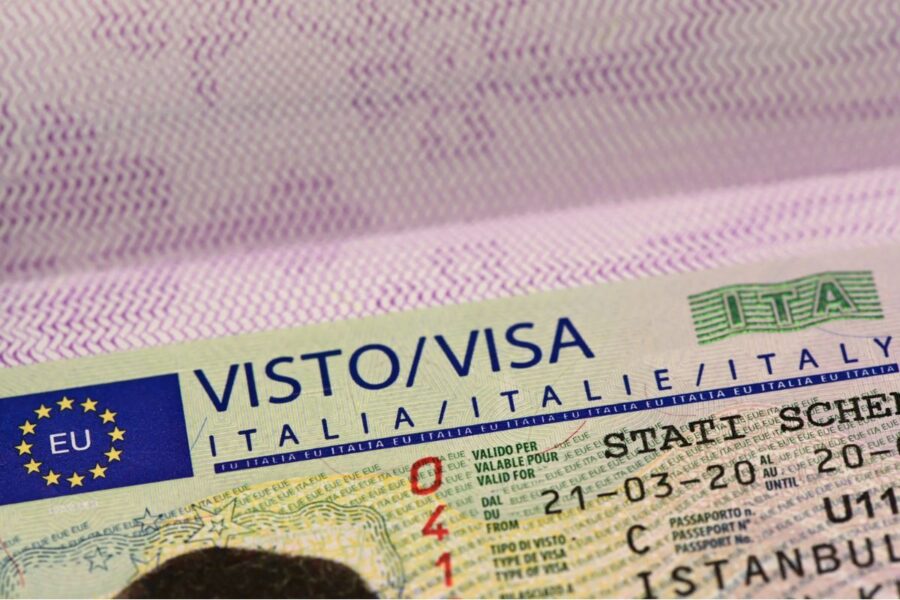
The most costly error remains working illegally on tourist visas. Italy’s Digital Nomad Visa costs €116 but prevents fines, bans, and legal complications that can reach thousands. The second budget killer involves underestimating true living costs—budget €2,000-3,500 monthly for comfortable lifestyle including villa, food, transport, and experiences.
Connectivity assumptions create productivity nightmares. That “high-speed internet” mentioned in listings might mean 10 Mbps DSL barely supporting email. Always request speed test screenshots and prepare redundant systems. Rural properties especially require mobile hotspot backups.
Seasonal price ignorance leads to budget shock. The Tuscan villa at €2,000 monthly in February jumps to €8,000 in July. Build budgets based on your actual travel dates, not off-season promotional rates. Similarly, factor hidden costs—utilities (€150-400), cleaning fees (€75-500), tourist taxes (€2-7 per night), and security deposits (€300-2,000) add 20-30% to advertised rates.
Cultural misunderstandings strain relationships and budgets. Attempting business during riposo (1-4 PM) marks you as an inconsiderate foreigner. Rushing through experiences misses Italy’s core value. The nomads who thrive embrace the slower pace, building relationships with villa owners that lead to future discounts and insider recommendations.
Tax residency surprises catch nomads spending over 183 days annually. Italy taxes worldwide income for residents, potentially creating double taxation without proper planning. Consult tax professionals familiar with your situation before committing to extended stays.
Your pathway to Italian villa success

Italy offers digital nomads an unparalleled combination of culture, cuisine, and connectivity at prices that remain accessible with proper planning. The data clearly shows 2025’s stabilizing market creates opportunities for strategic nomads willing to embrace shoulder seasons and emerging regions.
Start your journey by securing Italy’s Digital Nomad Visa, providing legal framework for your adventure. Focus searches on Sicily for maximum value, Tuscany for balanced lifestyle, or Amalfi Coast during off-season windows. Book 3-6 months ahead for optimal selection, negotiating 20-40% monthly discounts through direct communication with owners.
Success requires embracing Italy’s rhythms rather than fighting them. The nomads who thrive understand that a missed train leads to an unexpected adventure, that the local nonna’s pasta recipe is worth more than any productivity hack, and that sometimes the best investment in your business is an afternoon spent perfecting your espresso order at the village bar.
Your Italian villa awaits—not as an Instagram fantasy but as an achievable reality. With monthly rentals from €1,500 and growing digital infrastructure supporting remote work, 2025 presents the perfect moment to transform your workspace from mundane to magnificent. The only question remaining: will you watch another year pass from your current desk, or finally make Italy your office?
Ready to start your Italian villa journey? Begin with comprehensive travel insurance from [Generali Global Assistance] for extended stays, secure your connectivity with [TIM mobile plans], and browse verified monthly rentals on [Airbnb], [VRBO], and specialized sites like [Tuscany Villas]. Your Italian dream starts with a single booking.



